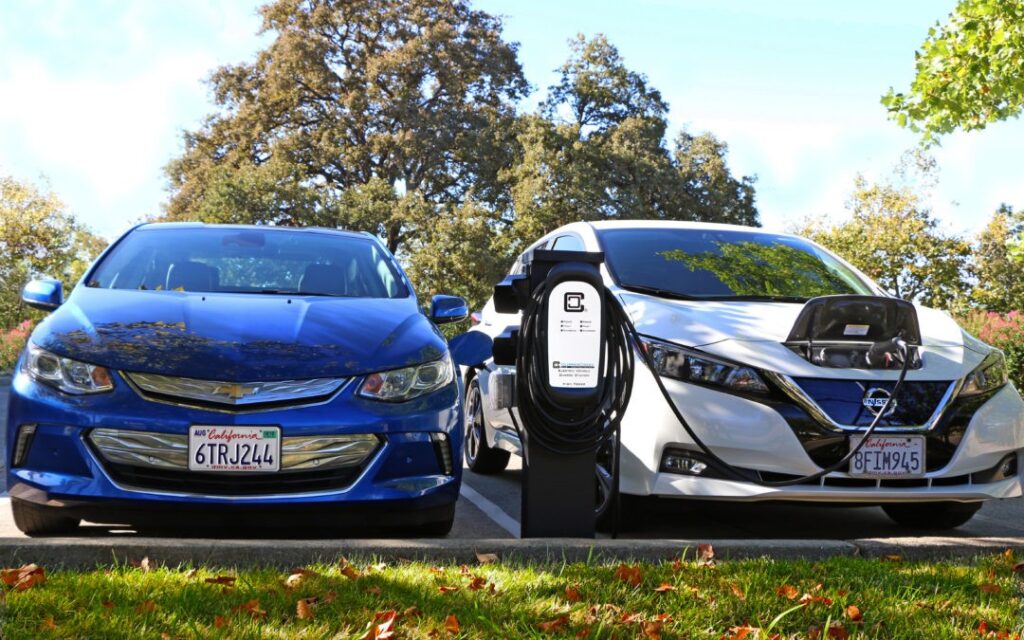Electric Vehicle Charging Infrastructure Market to Reach USD 147.94 Billion by 2030

High investments from automakers in EVs and growing concern about environmental pollution is driving the demand for the market
The global electric vehicle charging infrastructure market is forecast to reach USD 147.94 Billion by 2030, according to a new report by Reports and Data. Governments across the globe are investing heavily in the charging infrastructure to create opportunities for the OEMs to expand their business and revenue. The Asia Pacific and European regions are leading the adoption of these vehicles to curb the level of air pollution and emission of greenhouse gases (GHGs).
However, the high cost required in the initial investment, overhaul, and maintenance is hindering the market’s development. The dramatic reduction in local air pollution, greenhouse gas emissions and resulting climate change impacts, and less oil usage from the transport sector due to the usage of electric vehicles promise a breakthrough in the future transportation sector.
Request free sample of this research report at: https://www.reportsanddata.com/sample-enquiry-form/1066
The EV30@30 projects a policy case emphasizing the widespread adoption of electric vehicles (EVs), which is in line with the EV30@30 campaign, which started at the Eighth Clean Energy Ministerial in the year 2017. The campaign set the combined ambitious target for all EVI (Electric Vehicle Initiative) members of a 30.0% share of the market for EVs in total vehicles (excluding two-wheelers) by the year 2030. Under the EV30@30 Scenario, electric vehicle sales are likely to reach 44 million vehicles/year by 2030.
The COVID-19 impact:
Due to the COVID 19 pandemic, not only are the production lines in most electric car plants at a standstill but now the first effects on charging infrastructure are becoming apparent. This concerns both the maintenance and distribution of the pillars and the production of charging points. Pod Point and Ubitricity, for example, are postponing charging point installations in the United Kingdom that are currently not necessary.
The most sudden and visible effect of the virus in the traditional automotive industry induces the standstill of much original equipment manufacturer and supplier factories, which will produce 7.5 million fewer vehicles in 2020. At the peak of the crisis, over 90% of the factories in Europe, China, and North America were closed. The stock market and vehicle sales have plummeted, and automakers & suppliers have laid-off workers. Many have secured capital by either seeking investor money or applying for government assistance, while others have suspended dividend payments and extended their credit lines.
Electric Vehicle Charging Infrastructure Market By Infrastructure Provider (Charging Point Operator, E-Mobility Service Provider, Charging Hubs), By Charging Infrastructure Type, By Charging Level, By Vehicle Type, By Installation Type, And By Application, Forecasts To 2030, To identify the key trends in the industry, click on the link below: https://www.reportsanddata.com/report-detail/electric-vehicle-charging-infrastructure-market
Further key findings from the report suggest
- CHAdeMO is a standard for DC fast charging, enabling fast charging of the electric vehicles. CHAdeMO is the compressed form for CHArge de MOde and was developed in the year 2010 by a collaboration of Japanese Electric Vehicle manufacturing firms and TEPCO (Tokyo Electric Power Company).
- All the electric vehicles come with a 120-volt level 1 portable charger. These chargers can be plugged into a simple household outlet, and do not require any special installation. Most manufacturers provide a basic level 1, 120 Volt charger, and these can take between 8 & 20 hours, depending on the battery capacity of the vehicle.
- Electric bikes provide new potential, especially in leisure traffics and are in high demand in several tourist destinations. To promote the health environment, the presence of an e-bike charging infrastructure is crucial. Some of the most popular locations for e-bike charging stations are tourist attractions, restaurants, snack bars, accommodations, and leisure facilities or sights.
- The pressing environmental concerns comprising traffic congestion and pollution in the Asia Pacific region has led to a greater emphasis on the sale of electric vehicles with 56.0% of the sales coming from East Asia and 37.0% of Southeast Asia ready to buy an electric vehicle. The Asia Pacific region held a significant market share of electric vehicle charging stations in the year 2019 and is likely to witness a healthy growth rate of 39.6% in the forecast period.
- Key participants include Chargepoint, Inc., ABB Ltd., Tesla Inc., BP Chargemaster, EVGO Services LLC, Semaconnect Network, Greenlots, and EV Connect, among others.
- In February 2020, Avis India, car rental service provider, announced to partner with Quikk India, an e-mobility service provider, for the development of integrated solutions intended for corporate electric mobility services. The firms in collaboration have developed a groundbreaking, integrated AI-based model, which combines transportation services, as well as access to robust charging infrastructure, at costs approximately equivalent to those of existing ICE vehicles.
Category: Driver Stuff, Electric Vehicles, Featured, Fuel & Oil, General Update, Green, News, Tech Talk, Transit News, Vehicles










